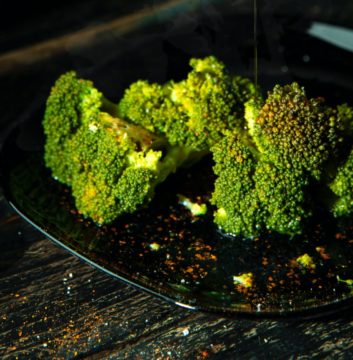Many people believe the more protein they eat, the easier it will be to build muscle, lose weight or improve overall nutrition. But most Americans get all the protein they need, especially the kind from animal sources. A diet that combines lean protein with whole grains, wheat germ, fruits and vegetables offers balanced nutrition that contributes to a healthy lifestyle.
The Centers for Disease Control and Prevention (CDC) recommends that average adults in the United States get 10 percent to 35 percent of their daily calories from protein foods. That translates to:
• Approximately 46 grams of protein for women (aged 19 to 70+)
• Approximately 56 grams of protein for men (aged 19 to 70+)
Athletes need a bit more protein, but not as much as many think. The Academy of Nutrition and Dietetics and the American College of Sports Medicine recommend the following for power and endurance athletes, based on body weight:
• Approximately 84 to 119 grams of protein for men
• Approximately 66 to 94 grams of protein for women
It’s not difficult to get the protein you need. Here are some common protein servings:
• 1 cup of milk contains 8 grams of protein
• 3 ounces of meat provides about 21 grams of protein
• 1/2 cup of canned beans has approximately 6 grams of protein
• An 8-ounce container of yogurt contains about 11 grams of protein
• 6 ounces of wild salmon has about 34 grams of protein
Importance of protein
Proteins are found in every part of our bodies, including the enzymes that help chemical reactions occur and hemoglobin that carries oxygen in our blood. Protein is constantly being broken down into amino acids and reconfigured to create the proteins our bodies need. Our bodies can make all but nine of these, which are called essential amino acids. The nine our bodies don’t make—but need—must come from eating protein-rich foods.
Animal protein vs. plant protein
Animal proteins contain all essential amino acids, while plant proteins are “incomplete,” meaning they lack some essential amino acids. Combining certain plant proteins, such as rice and beans or hummus and pita bread, creates “complete” proteins, with all the essential amino acids found in animal protein.
It’s important to vary your protein sources. For example, while steak and other red meat are good sources of protein, they contain saturated fat, which in excessive amounts can clog arteries and may lead to chronic diseases. Experts recommend consuming leaner types of protein, such as poultry without skin, non-fat or low-fat dairy products, fish, tofu, edamame and roasted soy nuts. You can also add protein to your meal with Kretschmer Wheat Germ. Try our Warm Cabbage, Apple and Wheat Germ Salad or Protein-Rich Smoothie with Wheat Germ and Chia Seeds.
Portion size
An easy way to ensure you’re getting about the right portion of protein when you eat meat, poultry or fish is to have a serving about the size and thickness of the palm of your hand—that’s about a 3-ounce portion. Or, when serving a meal on a 10-inch plate, the protein serving should not take up more than one-third of the plate.
What do you add to your meals to create a balanced plate?

